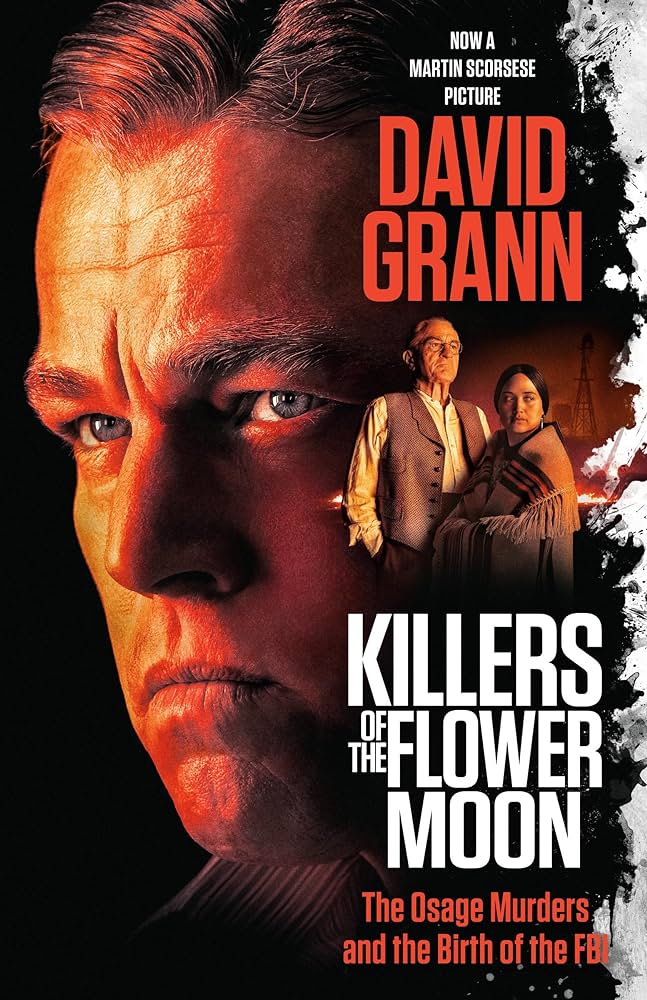Review: The riveting story behind Scorsese’s ‘Killers of the Flower Moon’
“Killers of the Flower Moon” tells the story of a Native tribe’s dealings with white Americans who are obsessed with obtaining more money and oil by killing numerous Native Americans.
“Killers of the Flower Moon” is the most recent film by world famous director and writer Martin Scorsese. It follows the story of the Osage tribe during the 1920s in Oklahoma as they discover they have been sitting on oil. The tribe inherits this oil since it is on tribal lands and distributes its wealth amongst its own people. This attracts the likes of William Hale, also referred to as “King” by locals who know him, a reserve sheriff and cattle rancher. He, like many other white opportunists, is looking to get his hands on the Osage wealth by whatever means.
In a string of murders, King plots with his co-conspirators to work their way into the tribe’s community and earn their trust. They deliberately seek out Native Americans to marry and convince them to sign off their property rights and funding to the white spouses if they die. Once they acquire the rights, they are murdered by a group led by King.
The film is a confrontation of the American myth and reveals the several attempts made by white people to kill off Native Americans and their culture. The film touches on systemic racism plaguing the general public and how that fueled the relentless push to expand the frontier. When several bodies of the Osage start surfacing, a panic overtakes the tribe.
As Scorsese put it in an interview, it’s not “whodunnit,” rather, who hasn’t dunnit.
What’s unique about the film is the coverage of Native history and the violent relationship with white settlers. A lot of the panic and fear you feel throughout the film is geared toward white settlers and their attempt to steal from the Osage. They carefully plot ways to collect insurance money and property rights without the tribe’s knowledge while gaining trust in the community.
Once in, they are now considered a part of the family and have full access to the Natives’ belongings: Houses, cars, money. They have children with them, live with their family and attend regular tribal council meetings. During these meetings you see the white opportunist listening in on everything the tribe is saying. They take notes and alter their plans accordingly. As things begin to unravel, a sense of pessimism grows quickly amongst the Natives and forces them to reconsider their relationship with the settlers.
Those who are married to the murderers and have kids with them are unwilling to face the possibility that they could be killed next. Other tribe members decided the town is no longer safe and moved away from Oklahoma. As the relationship worsens, the tribes meet more often. They are distraught from the chain of several Native deaths and decide the murderer is someone amongst them.
If Scorsese is good at anything, it’s showcasing the deeply rooted evil within a group of severely damaged individuals. The white opportunists who are killing off the Natives don’t see the harm in what they are doing. They find it as easy as making a living or paying the bills. When one member of the group is caught, he quickly gives in and says that he wanted the money and didn’t care about the Natives’ deaths. There was no inclination that the townspeople were concerned about the tribe’s wellbeing. In fact, during one scene depicting a mixed-race family, an elderly white couple argue over how “different” and “off-putting” the children look compared to the white ones. They note the difference in skin color and facial features and call them “savages.”
As Scorsese put it in an interview, it’s not “whodunnit,” rather, who hasn’t dunnit. We are constantly looking for a point of reference that reveals who is a part of the massacre of Natives. Was it just the locals in town? What about out of state? Are any of the tribal members noticing what’s happening outside of the meetings? This strong sense of paranoia is felt throughout the first half, until the FBI is called to conduct an investigation. Until this point, we don’t feel any sense of justice towards the tribe.
At the time of the film’s story, the 1920s lead how American civilians lived their lives. There was crime and corruption as prohibition swept over the country. The U.S. government vilified alcohol and its creation. People were criminalized for possession of alcohol and made to be an example of. Natives are often seen drinking outside of bars and partaking in gambling in the town the film takes place in.
Numerous issues flood the tribe like alcoholism, depression, anxiety and other mental health issues. In one scene, we see an Osage member tell King he feels like killing himself. He is unhappy and feels like he needs help from a doctor to which King says, “You’re fine, you’ll be okay. You’re a man, you can take care of this.” The tribal member was insured by King and needed to live till the end of the year before King could collect any insurance money on him.
As distraught and horrifying as the film is, it does a remarkable job at creating a picture of life for Natives during this time, depicting the influence of alcohol, corruption, religious fundamentalism and the Ku Klux Klan.”
Scorsese uses spaghetti westerns and film noir to create a world of turmoil and violence, a closed box that traps Natives in with no way out. They are forced to rely on outsiders like King for guidance. Until they begin to connect the dots and question their oppressor, they continue to suffer.

Right now, the film is available to watch at select movie theatres, including The Grand Cinema in Tacoma. Students can attend for a discounted price if they show a current student ID Card.



